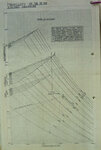Nick Sumner
Airman
- 68
- Aug 4, 2011
Did a search but couldn't find a direct answer and none of my reference books have it. Does anyone have the hp data for the RR Peregrine on 100 Octane fuel? All the data I've seen is for 87 Octane. Thanks!
Follow along with the video below to see how to install our site as a web app on your home screen.
Note: This feature may not be available in some browsers.
Ad: This forum contains affiliate links to products on Amazon and eBay. More information in Terms and rules
Did a search but couldn't find a direct answer and none of my reference books have it. Does anyone have the hp data for the RR Peregrine on 100 Octane fuel? All the data I've seen is for 87 Octane. Thanks!


The Peregrine could be run at +12psi and iirc 1100hp
Thanks for the replies all. Found something going through Bingham's book on the Whirlwind. Theres a data sheet on page 36 stating that the total power for an 87 octane Peregrine Whirlwind was 1770 (2 X 885) at 15,000 ft but on 100 octane would be 2030 (2 X 1015) @ 20,000 feet. I guess that's the answer...
...Or perhaps not 885 hp was the takeoff power it seems unlikely that a single speed supercharger would be able to maintain that out put at 15,000 feet so I cant help think its max hp and altitude for best speed not hp @ altitude.
The 1st figure is right (2 x 885 @ 15000 ft).
The 2nd figure is not - high octane fuel is not a replacement for improvements of a supercharger. The 2 x 1015 @ 10000 ft is much more likely. Please note that all power figures are without ram effect; installation on the Whirly was lousy anyway to take much if any advantage of the ram effect.
Certainly fair points Tomo, but in at least two places I've read of RR promising a 15% increase in Peregrine power with 100 Octane fuel which roughly co-responds to the 1015 figure. Its also not out of the ball park with Merlin improvements. Lumsden has the 880 hp figure at +9 lbs boost as being the 100 Octane rating (Lumsden Brit aero engines data tables at the end of the book). He gives a + 6.75 lb boost figure for the 87 Octane Peregrine but, unfortunately, no power figure!
Its possible the 1015 figure is assuming a higher boost on a Mk II engine.
Is there something wrong with primary sources?
Certainly not. The figure in Bingham is allegedly from a note from Westland to the Air ministry. It also gives the figure of '20,000 feet' as being the altitude at which the Whirlwind would attain its best speed powered by a 100 Octane fuelled Peregrine. The engine data on page 144 gives the maximum power of the 87 Octane Peregrine I engine as being 885 bhp at + 6.75 lb boost at 15,000 ft. Taken with the figures in Lumsden this implies (but doesn't prove) that the 100 Octane Peregrine delivered 1015 hp at + 9 lb boost at 20,000 feet.
The only way for Peregrine to make +9 psi boost at 20000 ft is that RR/Hooker does the clean-up job of the air intake(s) between carb and impeller like it was done on for the Merlin XX - and that didn't happen historically for Peregrine. As before: hi-oct fuel is no substitution for a better supercharger, whether we talk about Peregrine, Merlin, V-1710, BMW 801 or whatever piston engine.
Absolutely, so I can only assume that Rolls Royce planned to do exactly what they did with the Merlin XX with a developed Peregrine, had the decision to curtail Whirlwind production not happened. Obviously, the plan wasn't put into effect.
Do you have a date for that document Calum?
That is, was it early in the Vulture's development before all the problems came to light?
I have always wondered why the Peregrine was rated at 3,000rpm, while the Vulture, with the same bore and stroke, was rated at 3,200rpm (and 3,250rpm in that document). I'm guessing that's why the projected Peregrine power was not half of the Vulture's.
Note that Bingham page 36 shows a table, not really a datasheet.Thanks for the replies all. Found something going through Bingham's book on the Whirlwind. Theres a data sheet on page 36 stating that the total power for an 87 octane Peregrine Whirlwind was 1770 (2 X 885) at 15,000 ft but on 100 octane would be 2030 (2 X 1015) @ 20,000 feet. I guess that's the answer...